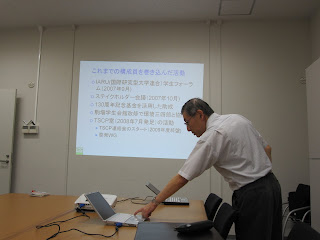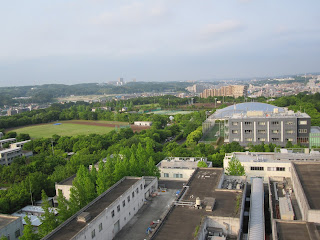I'm excited to start posting now that I've arrived in Cambridge!! In this first blog I'll just give a bit of context for the office I'm working in and the University.
Cambridge University celebrated its 800th birthday last year. The University is integrated into the surrounding town, so much so that it is difficult to track whether you’re on “campus” or in “town” or perhaps on the territory of a “college.” Departments which require more advanced technologies (physics, chemistry, engineering) are slowly moving to the periphery of campus, and the older buildings are used for administrative and humanities purposes.
The office I and another IARUS student, Wei Hong from the National University of Singapore, are working in is part of Estate Management. This is one of nine University Offices, which include Human Resources, Health & Safety, Research Office as examples. Currently, Martin Whiteland, Environmental Officer, is the only staff person though there are typically three. The office is located in what used to be the (rather large) attic of a two story building. The building reminds me a lot of our A&E building (though it's probably several hundred years older).
In addition to myself and Wei Hong, there are three other students pursuing masters at Cambridge working in the office as well over the summer. Their project is focusing on promoting students to use Campus as a Living Laboratory for pilot projects as well as building an interactive website where information about research relating to sustainability.
Estate Management has jurisdiction over the University but not the colleges. I like to think of colleges as our typical dorms but on steroids. In addition to what we are used to, they also have a library, a chapel, their own administrative staff and buildings, fields, gyms, recreational areas and more. And the colleges vary quite a bit in age – King’s College was built in 1441. Churchill College (where we are staying) was built in the 1970s. Though the colleges can ask for advice or resources from EM if they’d like to work on sustainability initiatives, their energy and water use is not monitored by EM and the Carbon Management Plan does not include them in its analysis of University carbon dioxide emissions or reduction goals.
The Promised Pictures
A view of my space in the office

This is Weihong, IARU student from Singapore.

The office is in a building with many stairways and doors and passages. Including this tiny tiny door that is actually used a couple times a day!

view from the office onto Trumpington Street, one of the largest in Cambridge.








 My picture with the President of the University of Tokyo (
My picture with the President of the University of Tokyo (


































